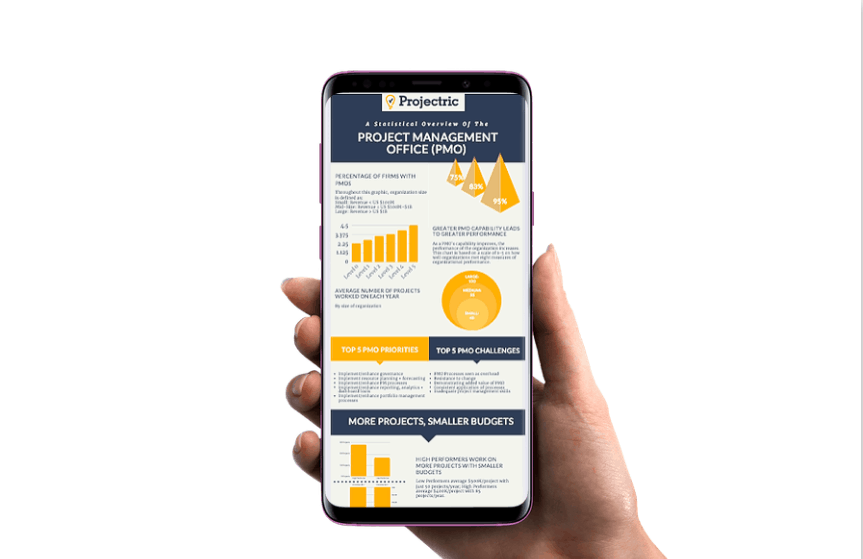Quick Take: 750 million users of Excel worldwide Excel has some pluses: ease of use, availability, flexibility, and cost Spreadsheets have their place, but managing a portfolio of projects effectively is not one of them Project Portfolio Management (PPM) requires a governance model and controls with an integrated workflow Projectric Project Portfolio Management software avoids all the negatives of not only spreadsheets, but also of overly-complex, feature-heavy PPM solutions Excel Conquered the World Microsoft estimates there are 750 million users of Excel worldwide. And it is no wonder—spreadsheets are a handy tool. But is Excel where you should be managing projects and project portfolios? We think the answer is a hard no! There are so many reasons, it’s hard to know where to start to delineate them. But first, let’s examine Excel as a project management platform. Benefits of Spreadsheets for Project Portfolio Management Spreadsheets are the project tracking and project portfolio management tool of choice for many organizations because of: Ease of Use—Most business people already know how to create spreadsheets or could learn very quickly. Availability—Spreadsheet applications are on almost every laptop and PC, just a click away. As a result, they have become a standard form of communication for business. Flexibility—Spreadsheets allow non-technical people to do things they never thought possible without learning a programming language. Cost—Because spreadsheets are typically already installed on most laptops and PCs, and creating a spreadsheet can be very fast and easy, they have very low start-up costs, if any. Spreadsheets offer a very quick, adaptable and inexpensive way to create a project inventory list from scratch. From there, it’s an easy step to grow the use of spreadsheets to try to manage projects. You can create spreadsheets of your project backlog, spreadsheets of active projects, and spreadsheets of finished projects. It doesn’t stop there. You can also create additional spreadsheets for resource lists with availability projections and spreadsheets of project plans. Some project managers even create project scope statements and other documents in spreadsheets. It’s easy to see why many project managers run their projects with Excel. How To Manage Project Portfolios With Spreadsheets In many organizations, projects are organized into Project Portfolios. A benefit of this technique is generally an improvement in the organization’s ability to monitor and guide projects. Portfolios are often managed with applications that are known as Project Portfolio Management (PPM) software. Implementing PPM on spreadsheets generally means you’ll be creating multiple spreadsheets, perhaps dozens or hundreds if your organization is large. Once lots of project spreadsheets have been created, the issue becomes how to update the information they contain. The information needs for decision-making frequently change as the project progresses through the lifecycle. For example, while the project is still in the pipeline—pre-launch—it is important for project managers to prioritize when projects are ready to launch. PMs must understand project alignment characteristics, value, the requested due date, and the estimated start date. And change all of these values manually. This can result in cascading changes in current and backlog project spreadsheets. Once the project is initiated, the PM’s overarching concern is each project’s health, progress, and likely finish date. These pieces of information require manual changes to the relevant spreadsheets. Certain functions in the project decision process do not lend themselves to a project list format. Thus, more spreadsheets are required. For example, if a scoring model is used for value assessment, this typically requires a different spreadsheet with different requirements. Spreadsheet growth can also be driven by resource availability tables which typically need to be viewed both by resource and by project. True Project Portfolio Management requires a governance model featuring controls and an integrated workflow. Having a defined process with decision points and requirements for movement from one stage to the next allows an organization to remain in control, be consistent, and make improvements. Spreadsheets were never designed to be able to implement a workflow, although a spreadsheet guru might be able to do so. However, this is rarely done for a PPM implementation due to the large amount of manual effort required. Even if your spreadsheet guru is up to the task, is this really worth the effort and time to maintain? All changes are manually entered or altered. That’s a big problem in spreadsheet project management. Hidden Costs of Project Portfolio Management by Spreadsheets Many costs associated with spreadsheets are not initially apparent. The large number of spreadsheets, the difficulty to collaborate and share information from these spreadsheets, and the fact that spreadsheets were not designed for certain PPM functions all drive up personnel and other costs. The resulting hidden costs include: 1. Wasted Time Spreadsheet users waste hours of time consolidating information from multiple spreadsheets and transferring selected information from one spreadsheet to another. Individual users also waste time trying to perfect their own view by resizing columns and rows, justifying text, and many other beautification activities that really don’t add value. With multiple spreadsheets and duplicative data, personnel waste time looking for and correcting inaccuracies in the data. Or worse, these inaccuracies never get corrected and create a risk to the organization. Often time is wasted when the spreadsheet builder has to explain the intricacies of their work so others can use it. This is further hindered by the differing skill levels of spreadsheet users. And, given the creators are constantly modifying their work, there is a constant need to explain the changes. 2. Inefficiencies Inefficiencies from spreadsheets occur in multiple areas. The preferred method of communicating spreadsheet information is usually to email them to others. In some cases, this is completed instantaneously; however, in other instances, there is a delay between when the spreadsheet was emailed and when it was opened. This leads to delays in work and decisions, and as a result, the information needed might not be available to a person when they need it. Emailing spreadsheets also leads to the potential for multiple versions of the same spreadsheet being updated independently and creating more inefficiencies











